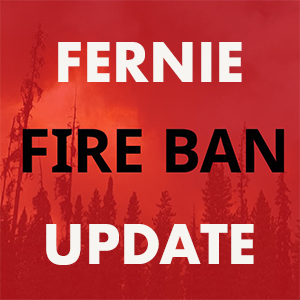“Our lives begin to end the day we become silent about things that matter”
Martin Luther King
The above quote was stated by Daniel Ste.-Marie, Secretary/treasurer of the Lost Souls Society, on Saturday August 12, 2017.
This was on the occasion of a commemorative ceremony held to honor the memory of internees buried at the Morrissey Cemetery. Several dignitaries attended along with interested members of the public, Councillor Joe Warshawsky and I as mayor attended to represent the City.









Daniel delivered a welcome to all present saying “It is hard to believe, when we look around at these idyllic surroundings, that 100 years ago the Canadian Government established an internment Camp.
The internment camp at Morrissey, established in late September 1915, was just one of 24 Internment Camps created and spread out across the country from Nanaimo to Halifax where the Government Interned 8,579 German and Austro-Hungarians including Ukrainians, Bulgarians, Croatians, Czechs, Germans, Hungarians, Italians, Jews, Ottoman Turks, Polish, Romanians, Russians, Serbians, Slovaks, and Slovenes who had been designated as “enemy aliens”. By the time the camp at Morrissey closed in mid-October 1918, almost 500 men who had been ripped from the bosom of their families, their friends and their communities were interned here. These men had not committed or been convicted of any crime. We should not forget that the Government of Canada invited these people to come to help populate the West, others were fleeing oppressive regimes. All they wanted to do was to build better lives for themselves and families. As a result they worked hard to make Canada what it is today by contributing to our economic development, providing opportunities for social change and cultural diversification. If you look at the image on page 2 of the Service Folder, you will find the image of the Windsor Hotel which was used to house the Internees. Some might think that the internees did not have it so bad. This is not so. They were housed up to 6 per room that measured 10 feet X 12 feet, had no freedom of movement as the building was surrounded by barbed wire, they were forced to work long hours felling trees, clearing stumps and building roads, all done with rudimentary tools in all types of climatic conditions. They were paid a paltry 25 cents a day for the work outside the camp, a mere pittance compared to the $2.50 to $3.00 a day they earned while they worked in the mines. Many were beaten for non-compliance, some so severely they had to be hospitalized at the Fernie Hospital. Sadly, during the Internment Operations, 106 internees were sent to mental institutions, one of whom was from the Morrissey Camp and a total of 107 internees died, four of whom died while interned at Morrissey and buried here in this Cemetery.
Buried in the Cemetery are:
Hrenko (Harry) Smeryczanski, a , 25 year old Galician, who died of Tuberculosis on March 30, 1917, Hermann Rellmann, a 22 year old from Essen Germany, who died of Chronic Brights Disease on November 1st, 1917, Mike Katalinic, who died of Tuberculosis on July 1st, 1918, Tom Rusich, a 48 year old Croatian, who died of Tuberculosis
on October 5th, 1918, a mere 2 weeks before the camp closed.
There is no doubt that a great injustice occurred and that we have an obligation to speak out about this injustice and give a voice to those who can no longer speak. For many years the memory of these events was almost forgotten as it was overshadowed by the Holocaust and the Japanese Internment during World War 2. Thankfully, because of a few dedicated individuals and outcry by the affected communities, the history of the First World War Internment Operations is being brought to light. With the installation of this plaque we acknowledge this injustice and ensure that future generations do not repeat the mistakes made in the past. Thank you for joining us to help preserve their memory.”
Before Daniel’s opening remarks the national anthem was sung by Meaghan Weber followed by unveiling of the plaque, consecration of Sign and New Grave Markers and then speeches by dignitaries.
Wayne Stetski, MP for Kootenay/Columbia, spoke saying that “all internees endured hunger and forced labour, helping to build some of Canada’s best known landmarks such as Banff National Park. Moreover 81 women and 156 children dependents of male internees were voluntarily interned”. He added that there had been no plans to establish a camp in Fernie however when miners turned against non-British workers and demanded that they be interned, in order to stop a major uprising and closure of the mine local, provincial and federal governments reacted by creating a camp in Fernie that grew so quickly that that a larger and more secure camp was required forcing a move to Morrissey. Wayne then went on to recount information on numbers and nationalities of people interned not only during this time but with the Second World War. The “Minister of Justice could detain anyone acting in any manner prejudicial to the public safety or the safety of the state”, he said. This meant both enemy nationals and Canadian citizens were subject to internment. Many were prominent families and the treatment received is part of Canada’s shameful history that most hope will never be repeated.
MLA for Kootenay East, Tom Shypitka, said he was honored to take part in this important ceremony and that “there is no flag large enough to cover the shame of killing innocent people”.
Andrew Hldayshevsky, QC, Canadian First World War Internment Recognition Endowment Council and Sarah Beauliew MA PhD Candidate at Simon Fraser University also delivered moving messages.
Touching words were spoken in prayer by Fr. David John of Fernie Holy Family Parish church and Fr. Andrew Applegate, Saint Aidan Orthodox Church in Cranbrook.
A beautiful plaque was then unveiled by John Gawryluk, President of Lost Souls Society, Wayne Stetski, Tom Shypitka, Andrew Hladyshevsky and Lawrna Myers, from the Canadian First World War Internment Recognition Fund Endowment Council.
Work was done at the cemetery with new wood fences placed around the graves of three of the local deceased interned men and the placing of large rocks on which the plaque of dedications sits.
This project was made possible by the Council of the Canadian First World War Internment Recognition Fund with support by the Regional District of East Kootenay, Elk Valley Thrift Shop Society, George and Marilyn Wilson, Lacey Mitchcll of Mitchell Excavating, Nick Morris of Morris Manufacturing, Cherished Memories Funeral Services, Jim and Adele Dvorak, Corlyn Haarstad, Canwell and Nature Conservancy of Canada.
Members of the Lost Souls Society, founded in 2015, say “It is dedicated to the preservation of our heritage by promoting historical research and public interest in the history of the Elk Valley.”

























